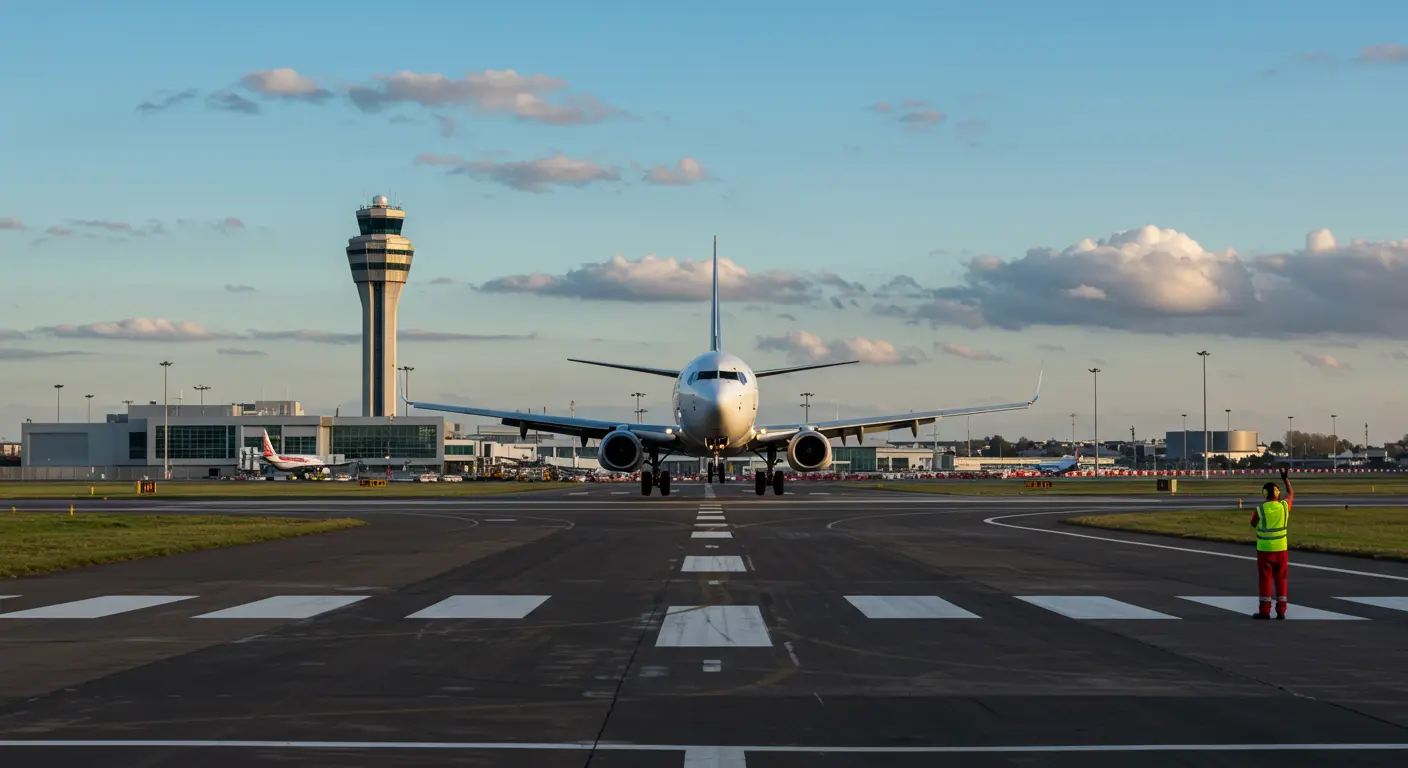What is Decision Height (DH)?
Decision Height (DH) marks a crucial point during precision approaches—a specific altitude where pilots face a pivotal choice: commit to landing or execute a missed approach. The decision depends on whether adequate visual reference with the runway environment has been established, including approach lights and runway markings. Should these essential visual cues remain obscured upon reaching DH, executing a missed approach becomes mandatory.
Acting as a vital safety measure, DH ensures pilots have adequate time and altitude for executing a safe missed approach when landing conditions prove unfavorable.
Unlike absolute measurements, DH is calculated relative to runway threshold elevation—making it a height above ground rather than a fixed altitude. This key difference distinguishes it from Decision Altitude (DA), its closely related counterpart.
Decision Height vs Decision Altitude (DA)
| Feature | Decision Height (DH) | Decision Altitude (DA) |
|—|—|—|
| Reference Point | Runway Threshold / Ground Level (AGL) | Mean Sea Level (MSL) |
| Measurement Type | Relative Height | Absolute Altitude |
| Primary Instrument | Radio Altimeter | Barometric Altimeter |
This difference becomes especially important for Category II and III approaches, which operate in severely limited visibility conditions. These specialized approaches require DH rather than DA since they rely on radio altimeters’ precise ground-level readings for operational safety.
Importance of Decision Height in Aviation Safety
Decision Height is fundamental to aviation safety for several key reasons:
-
Ensures Visual Confirmation: Provides a safety margin by requiring visual contact with runway environment before landing commitment, preventing landings in poor visibility.
-
Prevents FIT: Helps prevent Controlled Flight Into Terrain accidents by requiring missed approaches when visual references aren’t established—eliminating the risk of continuing descent without visual contact.
-
Standardizes Procedures: Provides consistent reference points for consistent training, crew communication, and safety protocols across all aircraft and operators—critical for global aviation safety.
Decision Height Procedures and Regulations
Regulatory authorities including the International Civil Aviation Organization (ICAO) and Federal Aviation Administration (FAA) regulate Decision Height procedures with detailed requirements. These regulations establish specific requirements for determining, communicating, and strictly adhering to Decision Height throughout instrument approaches.
Setting Decision Height for particular approaches requires evaluating multiple variables: approach type, available navigation aids, obstacle clearance requirements, and runway environment characteristics. For precision approaches like ILS (Instrument Landing System), Decision Height appears on published approach charts and requires adherence by flight crews.
In practice, pilots perform detailed DH briefings before approaches, configure altitude alerts, monitor descent profiles with standardized callouts, and render clear, verbalized decisions—either “continue” or “go-around”—upon reaching the critical height.
Rules clearly specify the visual references required at Decision Height for approach continuation. These usually include approach light systems, runway thresholds, runway markings, or runway edge lights. Requirements vary significantly based on approach type and category, with increasingly stringent standards for approaches featuring lower Decision Heights.
Air traffic control supports these procedures by delivering current weather information, approach clearances, and runway condition reports—important information that helps pilots’ decision-making preparation at Decision Height. However, final responsibility for procedural adherence rests squarely with the pilot-in-command.
Factors Influencing Decision Height
Several important factors determine the applicable Decision Height for any given approach:
-
Weather Conditions: Visibility and cloud ceiling directly influence runway visibility capabilities. Modern aircraft and airports can work with much lower DH minimums during adverse weather.
-
Aircraft & Equipment: Aircraft equipped with sophisticated avionics—including radar altimeters and advanced autopilots—qualify for lower DH operations (such as Category II/III approaches).
-
ILS Category: Approach category directly determines minimum DH requirements. Category I typically require 200 feet or higher, Category II permits descent to 100 feet, while Category III may eliminate DH requirements entirely.
-
Airport Infrastructure: Good approach lighting systems, precise runway markings, and visual slope indicators enhance pilots’ visual reference acquisition, supporting operations in marginal weather conditions.
Missed Approach Procedures Related to Decision Height
Missed approach procedures work closely with Decision Height, serving as a foundation for instrument approach safety. These procedures give pilots predetermined, obstacle-cleared flight paths when approach continuation becomes impossible—with Decision Height serving as the primary activation trigger.
Upon reaching DH without required visual references, pilots must immediately initiate the missed approach. This requires quick, coordinated action with several coordinated steps:
-
Applying takeoff power
-
Establishing positive climb rate
-
Retracting landing gear and flaps per schedule
-
Following the published missed approach route
Every instrument approach features a specific missed approach procedure published on its approach chart. These procedures are carefully designed to provide obstacle clearance while guiding aircraft to positions suitable for subsequent approach attempts or alternative actions. For precision approaches, the missed approach point directly corresponds with reaching Decision Height without establishing required visual references.
Comprehensive missed approach briefings—covering altitudes, headings, and navigation specifics—must occur before approach initiation. This preparation is vital for seamless execution during high-workload scenarios.
While air traffic control may provide modified instructions, the pilot-in-command bears sole responsibility for promptly initiating missed approaches at DH—without awaiting ATC authorization.

